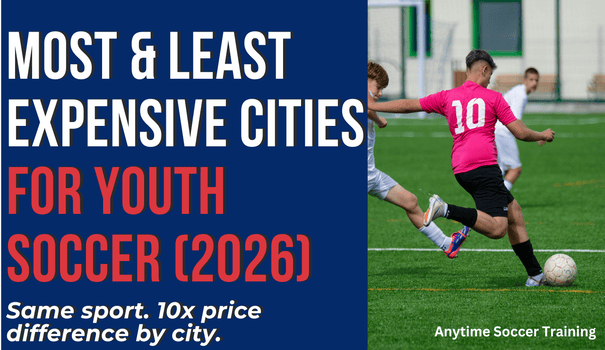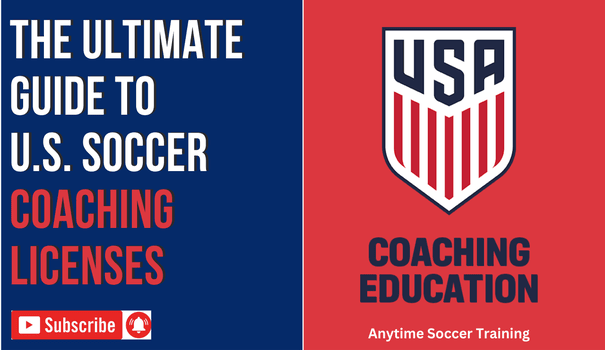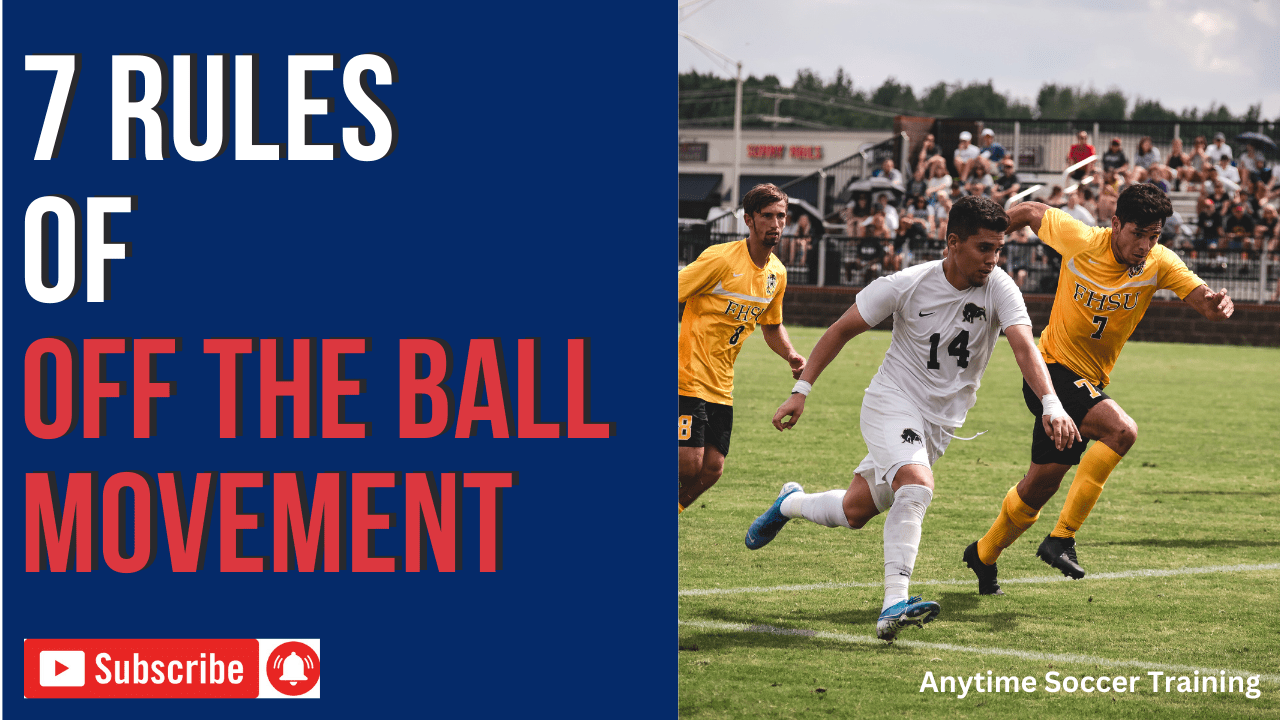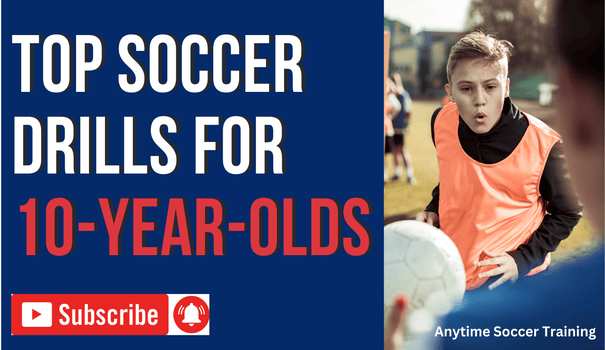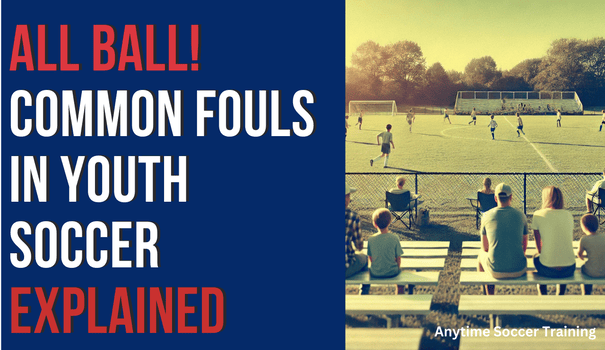
I didn’t grow up playing soccer, so when I first started coaching and watching my son play, I had a lot to learn on the fly. The game moves so fast, and it can be hard to keep track of all the rules. I remember one time, early on, I asked the coach if a player was offside—despite the fact that they were in their own half! That was when I realized I really needed to learn the game.
Now, 10 years later, I’m still learning. The other day, I got confused again between direct and indirect free kicks! It’s a bit embarrassing, but it’s a good reminder that we all start somewhere, and the learning never stops.
So, for any other parents, coaches, or anyone who feels a bit lost when it comes to the fouls of soccer, here’s a quick rundown of the most common fouls in youth soccer.
1. Offside
I’m sure you’ve heard this term tossed around, but here’s the quick version: A player is offside if they’re closer to the opponent’s goal line than both the ball and the second-to-last defender when the ball is passed to them.
It sounds complicated, but the main takeaway is that a player can’t just hang out near the goal waiting for the ball.
And yes, when my son was seven, that was his go-to tactic!
2. Fouls Involving the Ball
- Tripping: Simply put, if a player trips or attempts to trip an opponent, it’s a foul. It’s one of the most common fouls in youth soccer.
- Holding: If a player grabs onto their opponent, even just a little, that’s holding. I’ve seen this a lot at youth games and the referees usually call it.
- Pushing: When one player shoves another, it’s considered a foul.
3. Handball
This one is pretty straightforward: If a player intentionally uses their hand or arm to play the ball, it’s a foul. It’s often hard for young players to avoid, especially when they’re trying to control a loose ball in the air. The key point is the intention—if a player deliberately handles the ball, they’ll be penalized. However, the situation can get a bit trickier when the handball is unintentional.
If the handball is unintentional, the decision really depends on the situation. For example, if a player’s arm is in an unnatural position and they accidentally make contact with the ball, the referee might still call a foul, especially if it leads to an advantage. But if the ball simply hits a player’s hand or arm while they’re in a natural position or if they don’t gain an advantage from it, no foul may be called.
Now, when a handball happens in the penalty box, the stakes are higher. If the handball is deliberate, it results in a penalty kick for the opposing team. However, if it’s unintentional but still occurs in the penalty area, the decision becomes more subjective. A referee might judge whether the player’s arm was in an unnatural position, whether the ball was played at them intentionally, or if they had no chance to avoid it. In either case, a handball in the box is a critical moment, and depending on the circumstances, it could change the outcome of the game.
4. Dangerous Play
If a player raises their foot too high (e.g., for a high kick) or makes a reckless challenge, this is considered dangerous play. I’ve seen this happen a lot when kids are just learning to control their bodies on the field.
5. Goalkeeper Fouls
Goalkeepers are a special breed, but they’re still subject to fouls like everyone else. If a keeper picks up a back-pass (when their teammate deliberately kicks the ball to them), it’s considered an indirect free kick for the opposing team.
And, if a keeper holds the ball for more than 6 seconds, that’s a violation too. Even though they’re often the hero, goalkeepers need to follow the rules just like everyone else.
6. Rules for Parents and Spectators at Youth Soccer Games
There are special rules that govern parents and spectators at youth soccer games to ensure a positive and safe environment for everyone involved. These rules typically address where parents can sit during the game. In most cases, parents are assigned specific areas along the sideline, away from the team’s bench or technical area. This helps to avoid distractions for the players and coaches.
Parents are generally not allowed to sit behind the goals to prevent interference with play or to avoid distracting the players. Many fields have designated “spectator areas” to help maintain order and fairness throughout the game. These areas are meant to keep spectators at a safe distance from the field while allowing them to enjoy the game.
In addition to physical boundaries, it’s important for parents to respect general sportsmanship etiquette. This includes refraining from coaching from the sidelines or criticizing referees, as these actions can disrupt the flow of the game and cause unnecessary distractions for players. Always check the specific rules of your child’s league or tournament to make sure you’re following their guidelines and contributing to a respectful atmosphere for everyone involved.
Common Misunderstandings About Soccer Rules
As a parent, you might often find yourself puzzled by certain plays, especially when your child’s team is the one being called for a foul. Here are a few rules and situations that commonly cause confusion:
1. “Getting All Ball” Doesn’t Always Mean No Foul
A common misconception is that if a player gets all ball during a tackle, there can’t be a foul. However, this isn’t always the case. If a tackle is too reckless or the player makes contact with the opponent’s body first, it’s still a foul—even if they win the ball cleanly.
For example, if a player slides into an opponent, even if they cleanly get the ball, they can still be penalized if the tackle is deemed dangerous.
2. The “Tackle from Behind” Rule
Even if a player doesn’t make contact with the ball, a tackle from behind is usually considered a foul. This can sometimes be difficult for parents and players to understand, especially when it looks like a clean challenge.
The rule is in place to protect players from unnecessary injuries, as a tackle from behind can be dangerous even if the ball is won.
3. Direct vs. Indirect Free Kicks
Here’s a quick reminder: A direct free kick allows the player to shoot directly at the goal, while an indirect free kick requires the ball to touch another player before a goal can be scored. I’ve definitely been confused about this one more than once!
A common situation is when a goalie is penalized for picking up a back-pass or holding the ball for too long—an indirect free kick is awarded. It can be confusing since it’s still a foul, but no immediate shot at the goal is allowed.
4. “No Advantage” Doesn’t Always Mean a Foul
Referees sometimes don’t call a foul immediately if the team is still in possession of the ball or has a chance to make a play. This is called “playing advantage,” and it can be a bit frustrating as a parent when you think a foul should’ve been called.
However, the referee is using their discretion to let the game flow without disrupting it unnecessarily. It’s important to understand that a whistle doesn’t always mean the referee is saying “foul,” they might just be giving the team a chance to benefit from the play.
A Reminder to Keep It in Perspective
As a parent or coach, it’s important to remember that soccer is just a game. While it’s easy to get caught up in the excitement or frustration, let’s keep in mind that referees are doing the best they can. They’re human too, and mistakes will happen.
The most important thing is that we respect the game, the referees, and, of course, the kids. So, let’s enjoy the game, cheer on our players, and make sure we’re showing good sportsmanship on and off the field.
Whether you’re new to soccer or a seasoned pro, there’s always something more to learn. And even though I’m still getting confused about free kicks, I wouldn’t trade the journey for anything!
